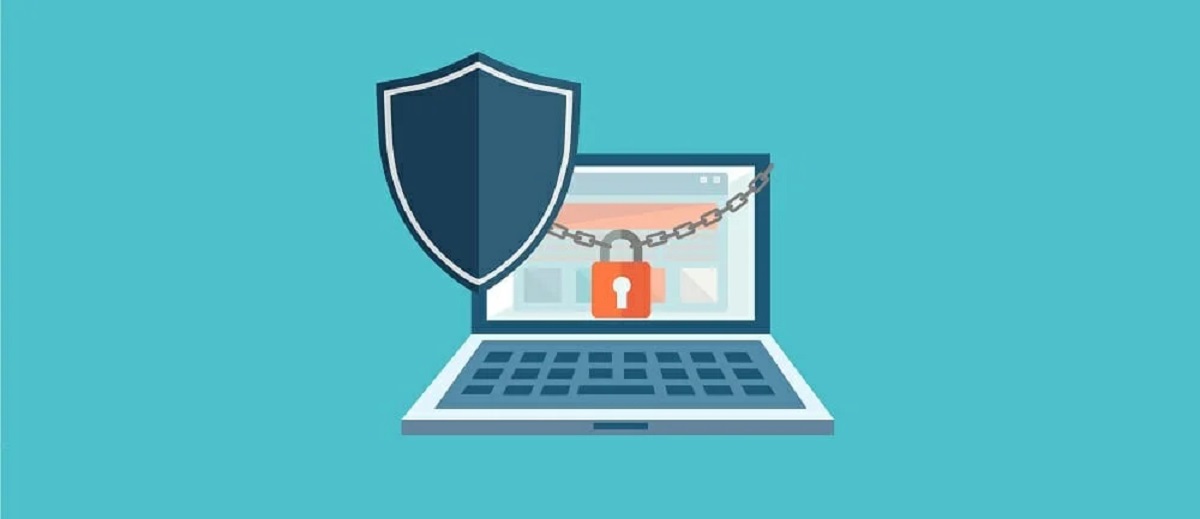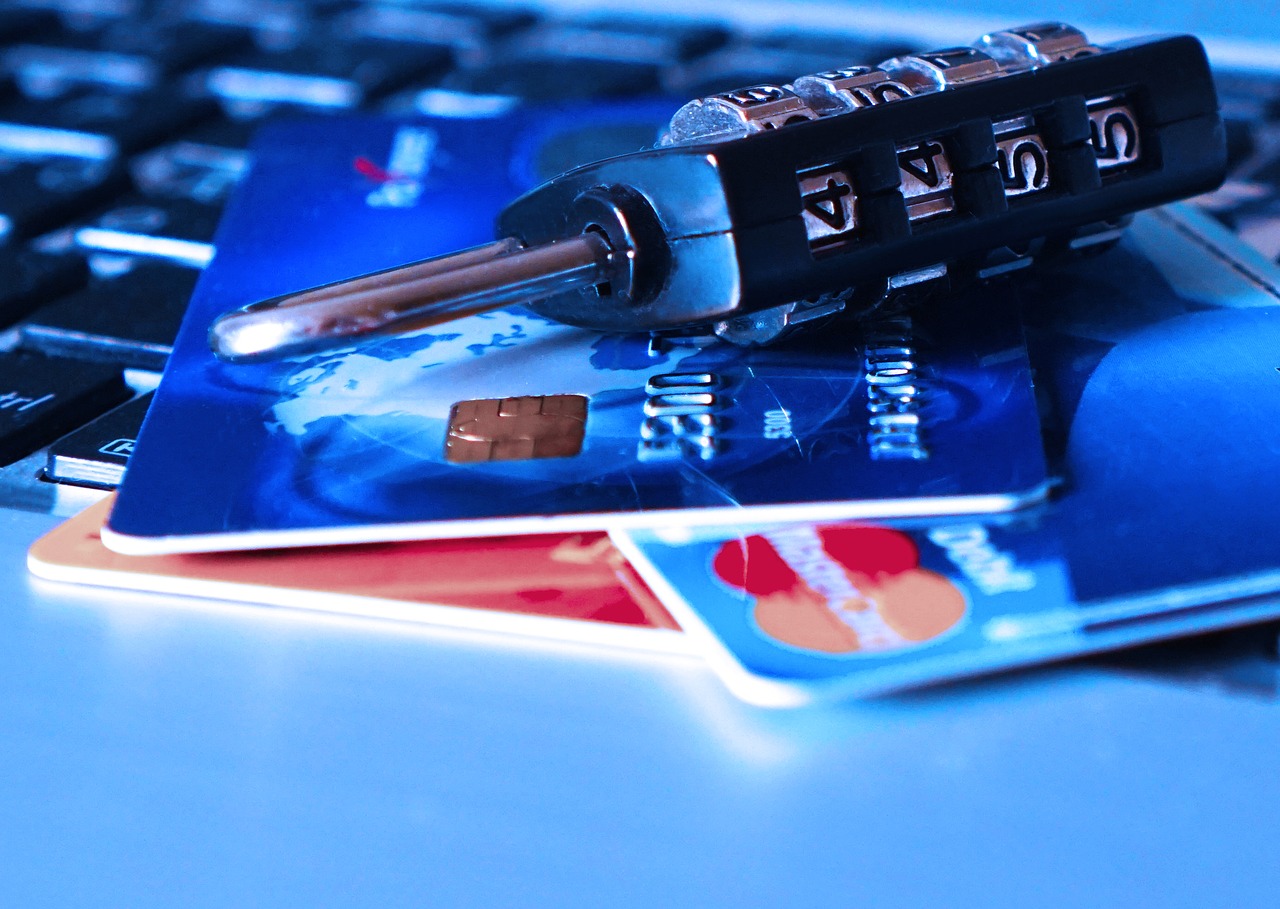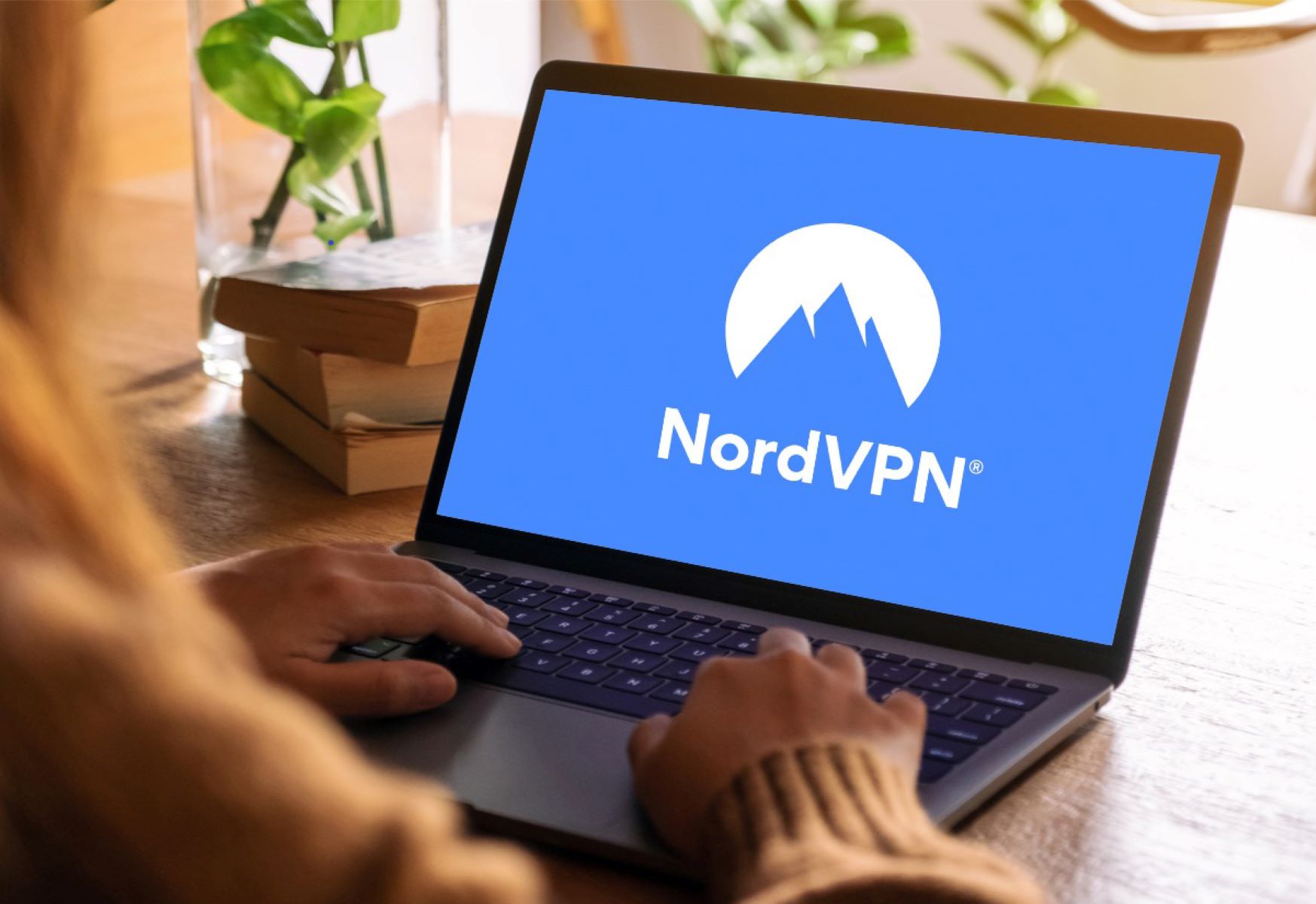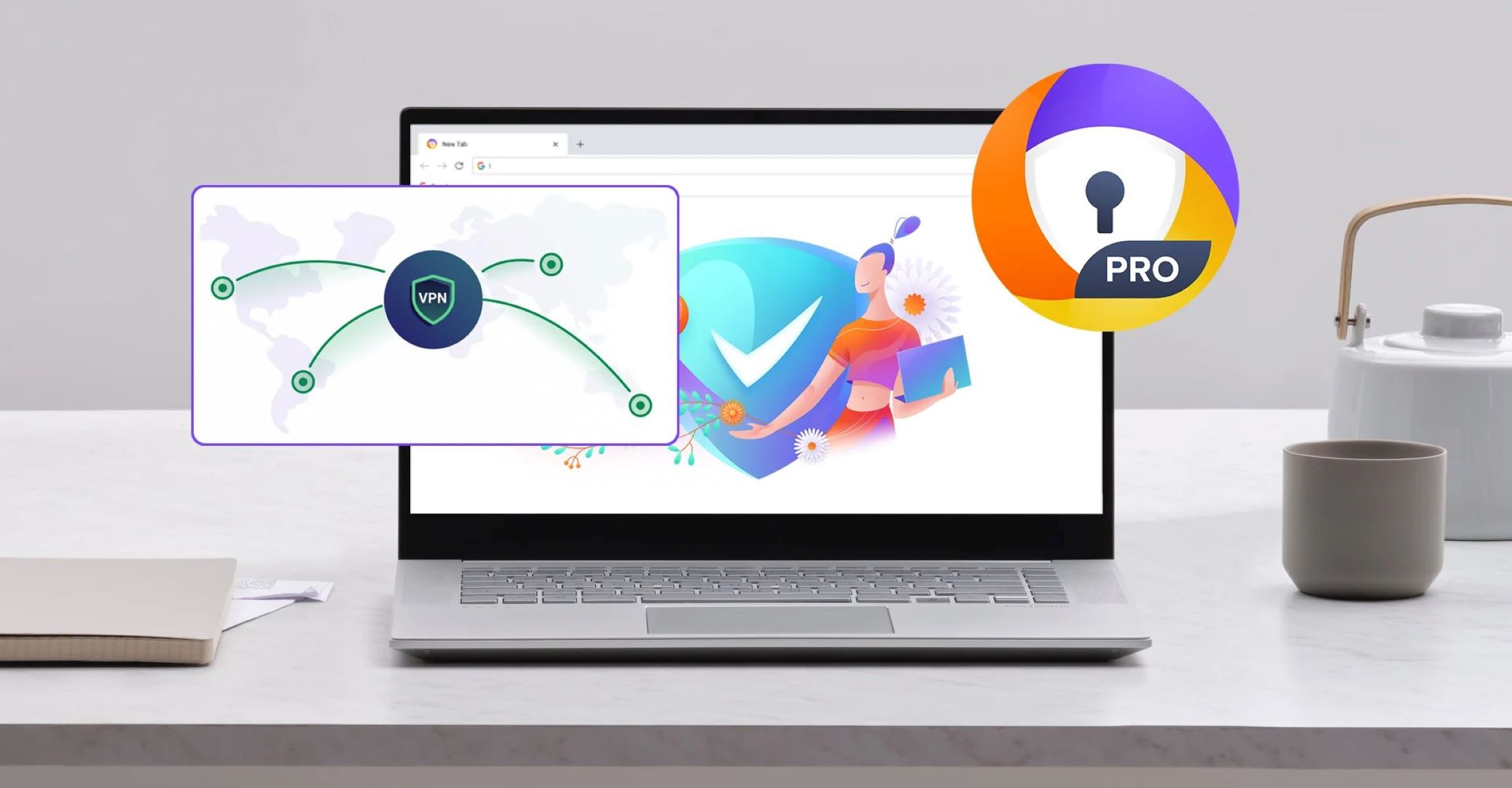Introduction
The Dark Web, a hidden and mysterious part of the internet, has gained notoriety for its illegal activities and anonymity. It is a place where cybercriminals thrive and where sensitive information, illegal goods, and malicious software can be found. With its underground nature, it poses significant risks to individuals, businesses, and organizations.
Blocking access to the Dark Web has become a critical cybersecurity measure for safeguarding against potential threats. By taking proactive steps to block the Dark Web, you can protect yourself and your sensitive information from falling into the wrong hands. But how exactly can you achieve this?
In this article, we will explore the concept of the Dark Web and why it is crucial to block access to it. We will also discuss various effective strategies and tools that you can employ to secure your network and prevent unauthorized entry to this hidden part of the internet.
From implementing strong network security measures to educating yourself and your network users, we will outline the steps you can take to make it difficult for cybercriminals to access the Dark Web and carry out their illegal activities.
So, whether you are an individual concerned about your personal cybersecurity or a business owner looking to protect your sensitive data, this comprehensive guide will provide you with the knowledge and tools necessary to block the Dark Web effectively.
What is the Dark Web?
The Dark Web, also known as the Darknet, is a part of the internet that is intentionally hidden and not accessible through traditional search engines. It operates on a network overlay called Tor (The Onion Router), which encrypts and anonymizes internet traffic, making it difficult to trace users’ identities and locations.
Unlike the surface web, which is the part of the internet accessible to the general public, the Dark Web is predominantly used for illicit activities. It hosts websites that offer illegal goods, such as drugs, weapons, counterfeit documents, and stolen data. It also serves as a marketplace for hackers and cybercriminals to buy or sell hacking tools, stolen credentials, and other illegal services.
The Dark Web provides a haven for various criminal activities, including identity theft, credit card fraud, money laundering, and trafficking in drugs and illicit materials. It also acts as a forum for cybercriminals to exchange information, share hacking techniques, and plan cyberattacks.
Accessing the Dark Web requires specialized software, such as the Tor browser, which provides anonymity by passing internet traffic through a series of encrypted relays. This makes it challenging for law enforcement agencies to track illegal activities and apprehend those involved.
It is important to note that not all activities conducted on the Dark Web are illegal. Some individuals use it for legitimate purposes, such as anonymous communication, bypassing censorship, and protecting their privacy in repressive regimes. However, the illegal activities and the potential risks associated with the Dark Web make it imperative to approach it with caution and take steps to block access to it.
In the following sections, we will explore the reasons why blocking the Dark Web is vital and discuss effective strategies to safeguard your network and prevent unauthorized access to this hidden part of the internet.
Why should you block the Dark Web?
Blocking access to the Dark Web is essential for various reasons, ranging from protecting personal and sensitive information to safeguarding your network from potential threats. Here are some key reasons why blocking the Dark Web should be a priority:
- Prevent illegal activities: The Dark Web is notorious for hosting illegal activities, including the sale of drugs, weapons, stolen data, and hacking services. By blocking access to the Dark Web, you reduce the risk of your network users engaging in or being exposed to illegal activities.
- Safeguard sensitive information: The Dark Web is a hub for stolen data, including personal information, financial records, and login credentials. By blocking access to the Dark Web, you minimize the chances of your sensitive information being exposed or sold to cybercriminals.
- Protect intellectual property: The Dark Web often serves as a platform for the distribution of pirated software, movies, music, and other copyrighted materials. By blocking access to the Dark Web, you can protect your intellectual property rights and prevent the unauthorized distribution of your digital assets.
- Enhance network security: The Dark Web is a breeding ground for cyberattacks. Hackers and malicious actors actively use the Dark Web to plan and coordinate attacks, share hacking tools, and exploit vulnerable systems. By blocking access to the Dark Web, you strengthen your network’s security posture and reduce the risk of being targeted.
- Comply with regulations: Depending on your industry, there may be regulatory requirements to block access to the Dark Web. For example, companies in sectors such as finance, healthcare, and government may need to implement measures to prevent unauthorized access to the Dark Web to comply with data protection and privacy regulations.
- Protect your reputation: If your network or organization becomes associated with the Dark Web, it can have severe reputational consequences. By taking proactive steps to block the Dark Web, you demonstrate a commitment to cybersecurity and protect your reputation as a trustworthy entity.
Given the risks and potential harm associated with the Dark Web, it is crucial to implement measures to block access to it. In the next section, we will explore effective ways to prevent unauthorized entry to the Dark Web and secure your network.
Ways to block the Dark Web
Blocking access to the Dark Web requires a multi-faceted approach that combines various security measures and tools. By implementing these strategies, you can significantly reduce the risk of unauthorized entry and protect your network from potential threats. Here are some effective ways to block the Dark Web:
- Secure your network: Start by ensuring that your network infrastructure is secure. This includes using strong passwords, enabling encryption, and regularly updating firmware and software on your network devices. Implementing strong security protocols provides a solid foundation for blocking unauthorized access to the Dark Web.
- Use network monitoring tools: Deploy network monitoring tools to detect and analyze network traffic. These tools can help identify suspicious activity, such as attempts to connect to Dark Web services. By monitoring your network, you can proactively block access and prevent any potential breaches.
- Implement web filtering and content blocking: Utilize web filtering and content blocking software to restrict access to websites and services associated with the Dark Web. These tools can analyze website content and block access to known Dark Web domains, preventing network users from accessing harmful or illegal content.
- Utilize firewall and proxy servers: Configure firewalls and proxy servers to block traffic to known Dark Web IP addresses and domains. Firewalls act as a barrier between your network and the internet, while proxy servers can filter and control internet traffic, blocking access to the Dark Web.
- Educate yourself and your network users: Knowledge is a powerful weapon against the Dark Web. Educate yourself and your network users about the risks and potential dangers of the Dark Web. By raising awareness and promoting responsible internet usage, you can minimize the likelihood of unwittingly accessing the Dark Web or falling victim to cybercriminal activities.
- Utilize antivirus and anti-malware software: Install robust antivirus and anti-malware software on all devices connected to your network. These tools can detect and block malicious software often associated with the Dark Web, reducing the risk of infections and potential security breaches.
By combining these strategies, you create multiple layers of defense against the Dark Web and enhance the overall security of your network. However, it is important to note that blocking the Dark Web completely is challenging, as it is constantly evolving. Thus, it is crucial to stay vigilant, regularly update your security measures, and adapt to emerging threats to effectively block access to this hidden part of the internet.
Secure your network
Securing your network is the first crucial step in blocking access to the Dark Web. By implementing robust security measures, you create a solid foundation for protecting your network and preventing unauthorized entry. Here are some key steps to secure your network:
- Use strong passwords: Ensure that all devices, accounts, and systems on your network are protected with strong, unique passwords. Avoid using common passwords or easily guessable combinations. Implementing strong passwords significantly reduces the risk of unauthorized access to your network.
- Enable encryption: Utilize encryption protocols, such as WPA2 or WPA3, to protect your Wi-Fi network. Encryption ensures that data transmitted over your network is secure and cannot be easily intercepted by malicious actors. Enabling encryption provides an additional layer of protection against unauthorized access.
- Update firmware and software: Regularly update the firmware and software of your network devices, including routers, firewalls, and access points. Updates often include security patches and bug fixes that address vulnerabilities. Keeping your network devices up to date reduces the risk of exploitation by cybercriminals.
- Implement access controls: Configure access controls on your network devices to restrict access based on user roles and permissions. This ensures that only authorized individuals can access critical network resources. Create separate user accounts with appropriate access levels to limit the risk of unauthorized network access.
- Segment your network: Divide your network into segments or VLANs (Virtual Local Area Networks) to isolate different types of devices or user groups. This reduces the impact of a potential breach and prevents lateral movement within your network. Segmentation helps contain any malicious activity and enhances your network’s overall security.
- Monitor network traffic: Implement network monitoring tools that analyze network traffic for any suspicious activities or anomalies. By monitoring your network, you can detect and respond to potential threats in real-time. Monitor traffic patterns and look for any signs of attempts to connect to Dark Web services.
Securing your network is an ongoing process that requires regular maintenance and updates. By implementing these measures, you establish a strong defense against unauthorized access to the Dark Web and protect your network from potential security breaches.
Use network monitoring tools
Network monitoring tools play a crucial role in blocking access to the Dark Web by helping you detect and analyze network traffic for any signs of suspicious activities or attempts to connect to Dark Web services. By leveraging these tools, you can proactively identify and block unauthorized entry to your network. Here’s how you can utilize network monitoring tools:
- Implement Intrusion Detection Systems (IDS): IDS tools monitor network traffic and look for patterns or signatures of known cyber threats. They can identify and alert you to any potential attempts to access the Dark Web or other malicious activities. By implementing IDS, you gain real-time visibility into your network and can promptly respond to any security incidents.
- Deploy Intrusion Prevention Systems (IPS): IPS tools provide an additional layer of security by not only detecting potential threats but also actively blocking and preventing them from entering your network. IPS analyzes network traffic, compares it against known attack patterns, and takes immediate action to block suspicious activity. This helps protect your network from unauthorized access to the Dark Web and other malicious activities.
- Utilize Log Analysis Tools: Log analysis tools help gather and analyze log data from various network devices and systems. By monitoring logs, you can identify any unusual or suspicious activities that could indicate attempts to access the Dark Web. Analyzing logs from firewalls, routers, and other network devices can provide valuable insights into potential security threats and help you take proactive measures to block access.
- Deploy Network Behavior Analysis (NBA) tools: NBA tools monitor network behavior and analyze traffic flows to identify anomalies or deviations from normal patterns. By understanding the typical behavior of your network, you can detect any abnormal activity that may signify attempts to access the Dark Web. NBA tools can provide alerts and recommendations to help you block unauthorized access and secure your network.
- Implement Security Information and Event Management (SIEM) systems: SIEM systems collect and correlate logs and events from various security devices and applications. They provide centralized monitoring and analysis of security events, allowing you to have a comprehensive view of your network’s security posture. SIEM tools can help you identify any indicators of Dark Web access and facilitate timely threat response.
- Regularly review monitoring reports: Review the reports generated by your network monitoring tools regularly. Pay close attention to any alerts, anomalies, or patterns that may indicate attempts to access the Dark Web. Act promptly on any identified security incidents and take appropriate measures to block unauthorized access.
By leveraging network monitoring tools, you can gain valuable insights into your network’s security and detect any suspicious activities that may lead to unauthorized access to the Dark Web. Regular monitoring and analysis allow you to take proactive measures to block access and maintain the integrity of your network.
Implement web filtering and content blocking
Implementing web filtering and content blocking measures is an effective strategy to block access to the Dark Web and prevent users on your network from accessing harmful or illegal content. By filtering and blocking specific websites and categories associated with the Dark Web, you can enhance network security and maintain a safe browsing environment. Here’s how you can implement web filtering and content blocking:
- Use URL filtering: URL filtering involves blocking specific URLs or website addresses associated with the Dark Web. Utilize web filtering software or services that maintain lists of known Dark Web domains and block access to them. This prevents users on your network from accessing these sites and reduces the risk of exposure to malicious content.
- Employ category-based filtering: Category-based filtering allows you to block access to specific categories of websites that are commonly associated with the Dark Web, such as illegal drugs, weapons, hacking tools, or explicit content. Web filtering solutions often provide predefined categories that you can select and block based on your organization’s policies and requirements.
- Utilize reputation-based filtering: Reputation-based filtering involves using databases or services that classify websites based on their reputation or trustworthiness. These databases can provide information about websites associated with the Dark Web or known for hosting malicious content. By blocking access to websites with a negative reputation, you can reduce the chances of users stumbling upon the Dark Web.
- Implement content scanning and analysis: Content scanning and analysis tools examine the content of webpages for specific keywords, phrases, or patterns that indicate Dark Web activity. These tools can detect and block access to pages containing illegal or malicious content, providing an additional layer of protection against access to the Dark Web.
- Consider using DNS filtering: DNS filtering involves blocking access to certain websites or categories at the DNS (Domain Name System) level. By configuring your network’s DNS settings to use a filtering service or DNS firewall, you can block requests to Dark Web domains before they are translated into IP addresses. This prevents users on your network from even attempting to access Dark Web sites.
- Regularly update and maintain filters: It is crucial to regularly update and maintain your web filtering and content blocking solutions. Dark Web domains and content can change frequently, and new ones can emerge. Stay updated with the latest lists and databases of Dark Web sites, and ensure that your filtering rules are up to date.
By implementing web filtering and content blocking measures, you can prevent users on your network from accessing the Dark Web and reduce the risk of exposure to illegal or malicious content. Combine these measures with other security strategies to create a strong defense against unauthorized access to the Dark Web.
Utilize firewall and proxy servers
Firewalls and proxy servers are essential network security tools that can play a significant role in blocking access to the Dark Web. By configuring your firewall and utilizing proxy servers effectively, you can restrict access to known Dark Web IP addresses, domains, and services. Here’s how you can leverage firewall and proxy servers:
- Configure firewall rules: Firewall rules allow you to control and filter incoming and outgoing network traffic. Create rules that block traffic to and from known Dark Web IP addresses or domains. By configuring your firewall to restrict access to these addresses, you can minimize the chances of unauthorized users accessing the Dark Web.
- Implement Application Layer Gateways (ALGs): ALGs are specialized firewall modules that allow you to inspect and filter traffic based on specific protocols or applications. Configure ALGs to block or monitor protocols commonly used to access the Dark Web, such as Tor or I2P (Invisible Internet Project). This ensures that attempts to use these protocols are either denied or logged for further investigation.
- Deploy a reverse proxy server: A reverse proxy server acts as an intermediary between clients and web servers. It can help filter and block requests to Dark Web sites by checking the requested URLs against a blacklist or predefined filtering rules. By deploying a reverse proxy server and configuring it to block access to Dark Web domains, you can prevent users on your network from accessing these sites.
- Utilize transparent proxying: Transparent proxying involves redirecting web traffic through a proxy server without requiring manual configuration on client devices. By implementing transparent proxying, you can enforce web filtering and content blocking policies at the network level. This ensures that all network traffic, including access to Dark Web sites, is routed through the proxy server and subjected to filtering rules.
- Use SSL/TLS inspection: Enable SSL/TLS inspection on your firewall or proxy server to decrypt and analyze encrypted web traffic. This allows the firewall or proxy to examine the content of encrypted connections and block requests to Dark Web sites or identify malicious activity. SSL/TLS inspection provides an additional layer of security when attempting to block access to encrypted Dark Web services.
- Regularly update and maintain firewall and proxy rules: It is crucial to regularly update and maintain your firewall and proxy rules to ensure they align with the ever-changing landscape of the Dark Web. Stay informed about emerging Dark Web IP addresses, domains, and protocols, and update your blocking rules accordingly.
By utilizing firewalls and proxy servers effectively, you can control and filter network traffic, preventing unauthorized access to the Dark Web. Combine these measures with other security practices to create a robust defense against the potential risks associated with the Dark Web.
Educate yourself and your network users
Education plays a critical role in blocking access to the Dark Web. By educating yourself and your network users about the risks and potential dangers associated with the Dark Web, you can raise awareness, promote responsible internet usage, and minimize the likelihood of unauthorized access. Here’s how you can educate yourself and your network users:
- Learn about the Dark Web: Take the time to understand what the Dark Web is, how it operates, and the potential risks it poses. Educate yourself about the illegal activities, cyber threats, and privacy concerns associated with the Dark Web. Stay updated with the latest trends and techniques used by cybercriminals in the Dark Web ecosystem.
- Provide training and awareness programs: Conduct regular training sessions and awareness programs to educate your network users about the Dark Web. Cover topics such as the risks of accessing the Dark Web, the consequences of engaging in illegal activities, and the importance of maintaining strong cybersecurity practices. Help them understand the potential impact on their personal and professional lives.
- Highlight legal and ethical implications: Emphasize the legal and ethical aspects of accessing the Dark Web. Make it clear to your network users that engaging in illegal activities or accessing prohibited content on the Dark Web can have severe legal consequences. Promote responsible internet usage and encourage compliance with laws and regulations.
- Teach safe browsing practices: Educate your network users on safe browsing practices to minimize the risk of accidentally stumbling upon Dark Web sites. Teach them to avoid clicking on suspicious links, downloading unknown files, or accessing unfamiliar websites. Encourage the use of reputable websites and caution against sharing personal or sensitive information online.
- Encourage reporting of suspicious activities: Foster a culture of reporting among your network users. Encourage them to promptly report any suspicious activities or potential Dark Web-related incidents. Establish clear channels for reporting, such as a dedicated email address or a helpdesk, and ensure that reports are taken seriously and investigated promptly.
- Stay informed about emerging threats: Continuously educate yourself and your network users about emerging threats and new techniques used in the Dark Web. Stay updated with the latest cybersecurity news, trends, and best practices. Share relevant information and resources with your network to keep everyone informed and prepared.
By fostering an environment of education and awareness, you empower yourself and your network users to make informed decisions and adopt responsible behavior when it comes to accessing the internet. Education acts as a proactive measure to prevent unauthorized access to the Dark Web and minimize the potential risks associated with it.
Utilize antivirus and anti-malware software
Utilizing antivirus and anti-malware software is a crucial step in blocking access to the Dark Web and protecting your network from potential security threats. These software solutions help detect and prevent the entry of malicious software often associated with the Dark Web. Here’s how you can leverage antivirus and anti-malware software:
- Install reputable security software: Choose a reputable antivirus and anti-malware software solution and install it on all devices connected to your network. Ensure that the software is up to date and regularly receives updates to defend against the latest malware threats, including those distributed through the Dark Web.
- Schedule regular scans: Configure your antivirus software to perform regular scans of your network and devices. Schedule automatic scans to detect and remove any malware or suspicious files that could have been inadvertently downloaded from the Dark Web or other sources. Regular scans help ensure that your network remains free from malicious software.
- Enable real-time protection: Activate real-time protection features offered by your antivirus software. Real-time protection actively monitors network and device activity, blocking any incoming or outgoing connections deemed suspicious or associated with the Dark Web. It provides an additional layer of defense against malware attempting to access the Dark Web or infiltrate your network.
- Implement web filtering and file reputation: Utilize antivirus software with web filtering capabilities to block access to known malicious websites associated with the Dark Web. Additionally, leverage file reputation features that analyze the reputation of downloaded files, preventing the execution of potentially harmful files obtained from the Dark Web.
- Enable automatic updates: Ensure that your antivirus software is set to receive automatic updates. Regular updates include the latest virus definitions and detection algorithms that protect against newly emerging threats found on the Dark Web. These updates help keep your antivirus software effective and up to date in blocking access to malicious content.
- Train users on safe email and file handling: Educate your network users on safe email and file handling practices to prevent the accidental download of malware from the Dark Web. Teach them to be cautious when opening email attachments or downloading files from unfamiliar websites, as these could contain malicious content that can compromise network security.
By utilizing antivirus and anti-malware software, you add an important layer of protection against malware and other threats originating from the Dark Web. Combined with other security measures, these software solutions help maintain a secure and threat-free network environment.
Conclusion
Blocking access to the Dark Web is a crucial step in ensuring the security and integrity of your network. The Dark Web poses significant risks, including illegal activities, exposure to sensitive information, and the potential for cyberattacks. By implementing the strategies outlined in this article, you can effectively block access to the Dark Web and mitigate these risks.
By securing your network, using network monitoring tools, implementing web filtering and content blocking, utilizing firewall and proxy servers, educating yourself and your network users, and leveraging antivirus and anti-malware software, you create a layered defense that significantly reduces the chances of unauthorized access to the Dark Web.
It is important to remember that blocking the Dark Web completely is a challenging task, as it constantly evolves and new threats arise. Therefore, it is crucial to stay informed about emerging trends and continuously update your security measures to stay ahead of potential risks. Regularly educating yourself and your network users will ensure that everyone remains vigilant and informed about the risks associated with the Dark Web.
By adopting a proactive and multi-faceted approach to blocking the Dark Web, you can protect your network, sensitive information, and users from falling victim to the illegal activities and cyber threats that lurk in this hidden part of the internet. Prioritize network security, ongoing monitoring, user education, and the use of effective security tools to maintain a secure online environment.

























